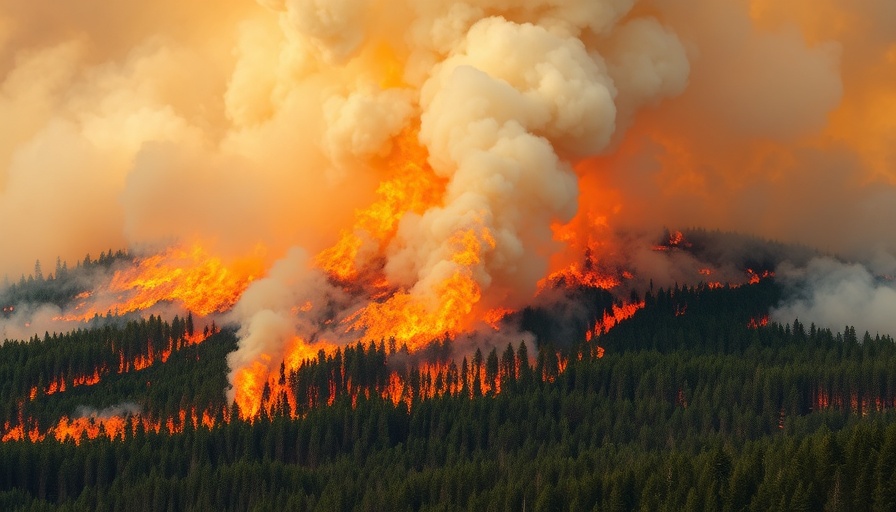
Understanding the Severity of the Palisades Fire
The tragic case of the Palisades Fire, which resulted in 12 fatalities and the destruction of thousands of homes, is a stark reminder of the catastrophic consequences of wildfires fueled by human actions. The fire, ignited on New Year's Day, transformed from a small blaze to a massive conflagration within a week. It all began when 29-year-old Jonathan Rinderknecht allegedly lit a fire that smoldered underground for several days until a combination of drought conditions and high winds caused it to resurface violently.
The Arrest: Why It Matters to Victims and Insurance Claims
Rinderknecht's arrest in Florida marked an important step toward justice for the victims. As evidenced by the legal proceedings following the incident, accountability matters immensely for those who lost their homes and loved ones. Victim compensation is complicated by ongoing litigation against utility companies, revealing how intricately the aftermath of such disasters intersects with insurance claims. Many residents are asserting that inadequate safety measures by the Los Angeles Department of Water and Power hampered firefighting efforts, making it vital to scrutinize not only the arsonist but also entities tasked with public safety.
Analyzing the Insurance Implications for Palisades Residents
The Palisades Fire is emblematic of a broader issue in the insurance landscape. Following such disasters, residents often encounter hurdles when filing claims for property damage. According to recent trends in the insurance sector, claim disputes escalate amid catastrophic events. Policyholders need to navigate complex claims processes, focusing on timelines, documentation, and communication with adjusters to ensure they receive adequate compensation.
Risk Factors Contributing to Wildfire Severity
The underlying conditions that allowed the Palisades Fire to escalate so dramatically include prolonged regional drought, a common precursor to wildfire outbreaks in California. Heatwaves, coupled with climate change, heighten the risk of starting fires, making understanding these environmental dynamics crucial for residents. Furthermore, the failure of emergency services to respond effectively emphasizes the necessity for improved protocols in fire management, especially under extreme weather conditions. This case illustrates the need for individuals in at-risk zones to know their rights and the potential inadequacies of emergency responses when disasters strike.
The Importance of Being Prepared
Residents of South Carolina and those in high-risk wildfire areas must learn critical lessons from the Palisades incident. Preparedness plans, essential supplies, and property insurance reviews cannot be overlooked. Individuals should assess their coverage options to understand what is included in their policies, especially regarding wildfires.
As South Carolinians, staying informed about ongoing insurance claim trends and potential industry changes will empower households to react effectively in similar crises. Eventually, advocating for greater utility accountability, regional fire safety measures, and improved insurance practices will require community engagement.
In light of recent events, appropriate actions might include reviewing homeowners’ policies for wildfire coverage, discussing potential updates with insurers, and participating in local preparedness training.
As we reflect on the harm caused by the Palisades Fire, it becomes clear that our continued vigilance and proactive strategies can significantly influence outcomes in both prevention and recovery efforts.
 Add Row
Add Row  Add
Add 




Write A Comment